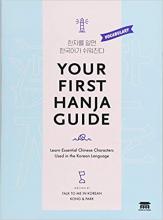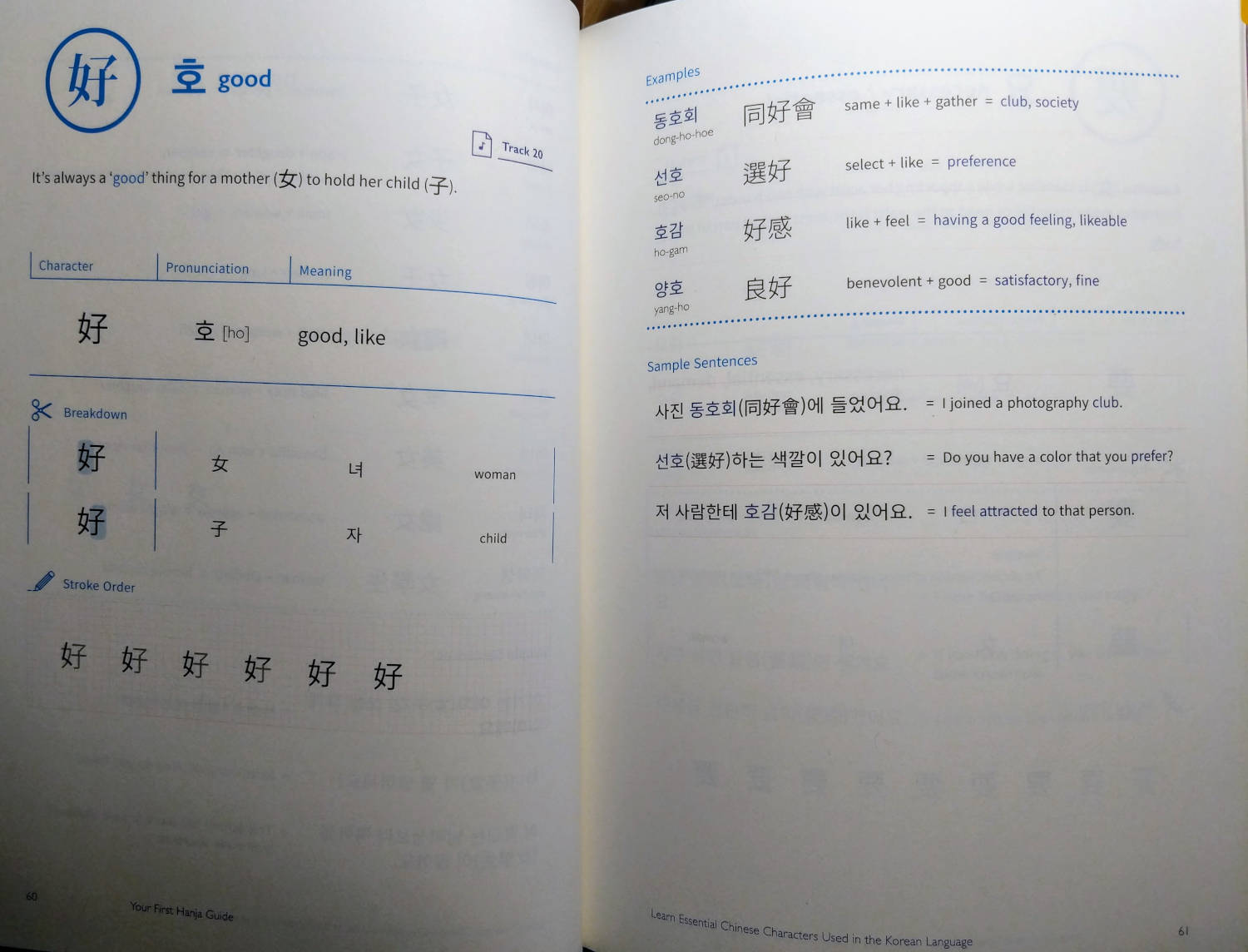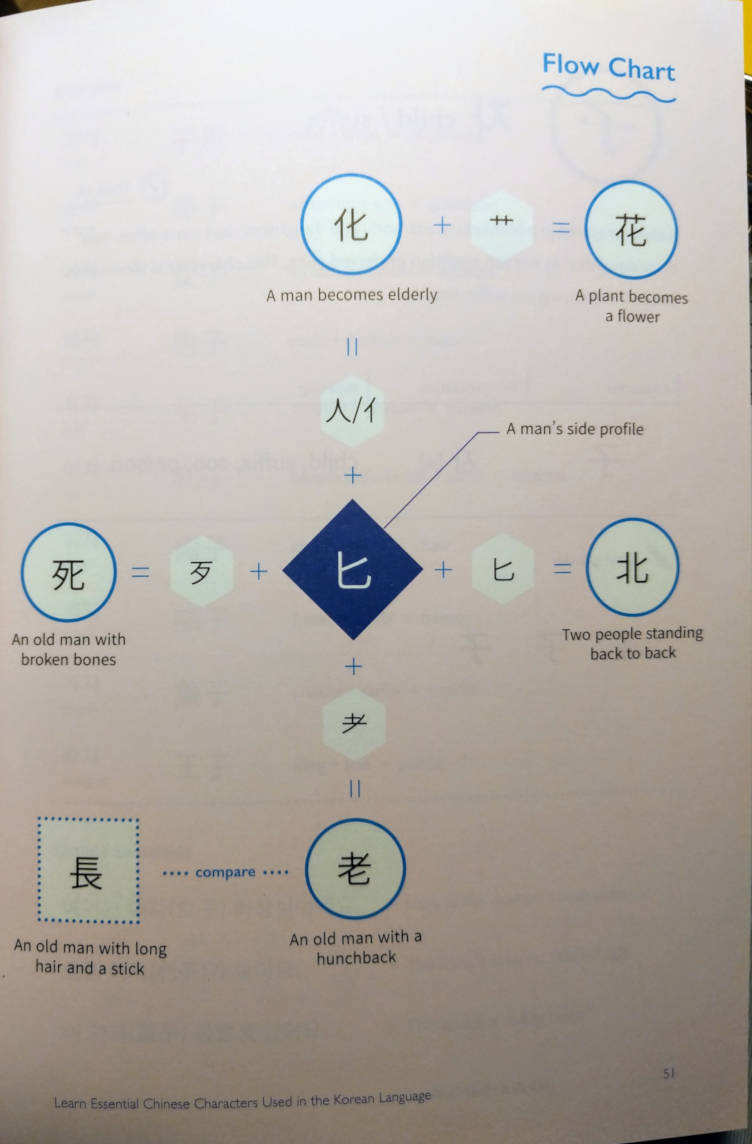
Your First Hanja Guide is a 한자 (hanjja, or Chinese characters used in the Korean language) reference book co-written by the staff at Talk to Me in Korean (TTMIK). This book is one of their few books aimed both at their intermediate and advanced learners of Korean and is meant to be an introduction to common Korean words of Chinese origin used in everyday language.
As with most of their books, the presentation is flawless; the fonts used throughout the book are very legible and large enough (very welcome because of the high number of strokes in a lot of 한자), the colors are harmonious, and some of the inserts help graphically break down the composition of Chinese characters. The counterpart of this great presentation is that this book wastes a lot of white space that could be used to add a lot more characters in order to be truly useful to advanced Korean learners.
Your First Hanja Guide is a great book to get initiated about the world of 한자 (Chinese characters) for intermediate students, but advanced students will probably feel let down by this book that has nearly not enough content (only 118 한자) to be used as a reference.
Advantages
- Amazing introduction to Chinese characters for intermediate learners of Korean who have never been in contact with them.
- Graphical breakdown of characters to show their composition.
- Memonic provided for each character to remember the meaning from the character composition.
- Welcome presence of stroke order for each character (Chinese Character Cognates: 808 Common Hanja for example does not include them).
- Pronunciation of the examples for each character included as a download.
- Great presentation for self-taught students (quizzes, thematic order).
Drawbacks
- The book contains only 118 characters, when the book Chinese Character Cognates: 808 Common Hanja has 808 characters in about the same number of pages (352 for Your First Hanja Guide).
- Advanced learners will thus probably already know most of the examples in the book.
- The book gives many examples of words using each character, but few example sentences (which is regrettable, as some pages are half-filled with white space). For example, the pages for 호 (好; good) have the example 동호회 (club, society), 선호 (preference), 호감 (likeable), and 양호 (satisfactory, fine) but provide examples for the first three words only (cf. illustration below).
- The pronunciation of each example is written in Latin alphabet (hard to parse) although the book is targeting intermediate and advanced learners. Pronunciation in 한글 instead (like in the Naver Korean Dictionary or on KoniKorean) would be preferable.
- The book is missing (at least) two indexes: one ordering characters by their 한글 reading, and one ordering characters by their number of strokes.
- The quizzes at the end of each chapter do not add much value to the book.
Samples
Notes
KoniKorean has yet to find the perfect 한자 book for Korean learners.
Although the book does not seem to mention it, it is worth noting that 한자 is pronounced (한:짜) and not (한자).


